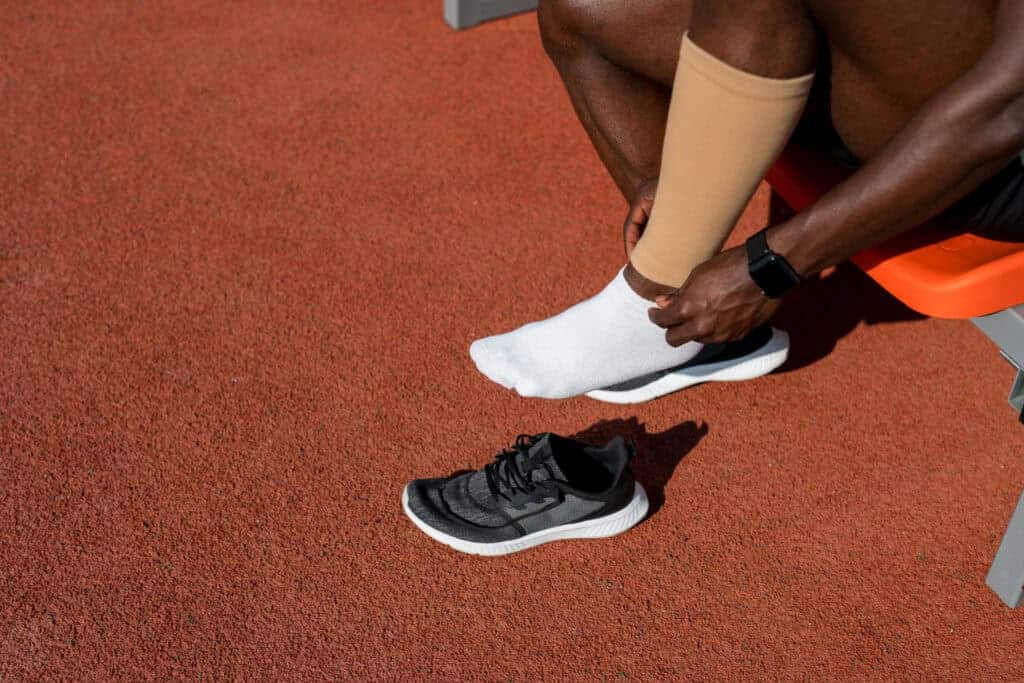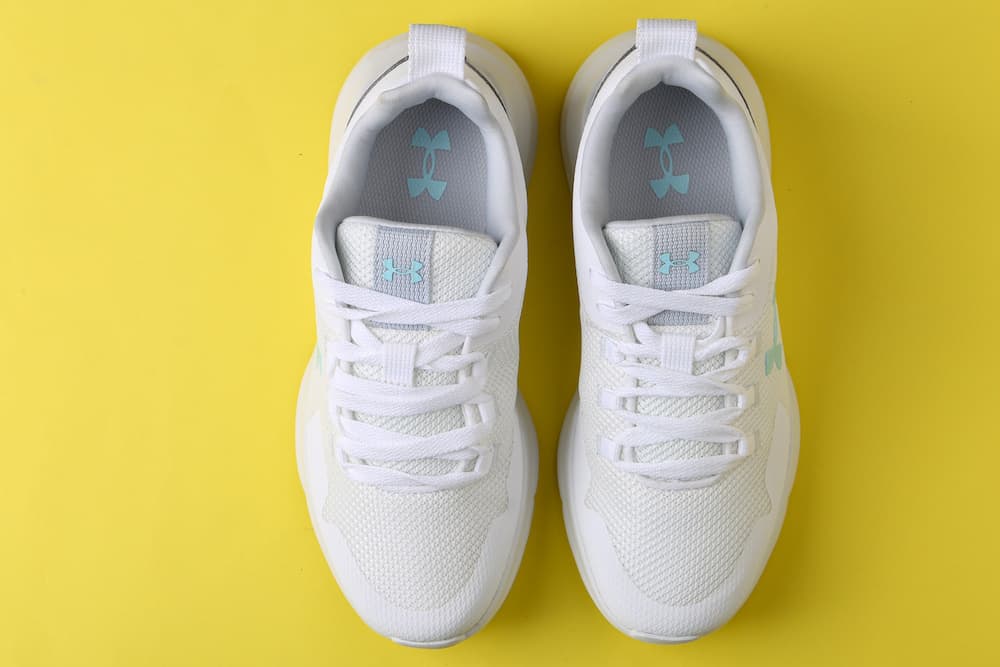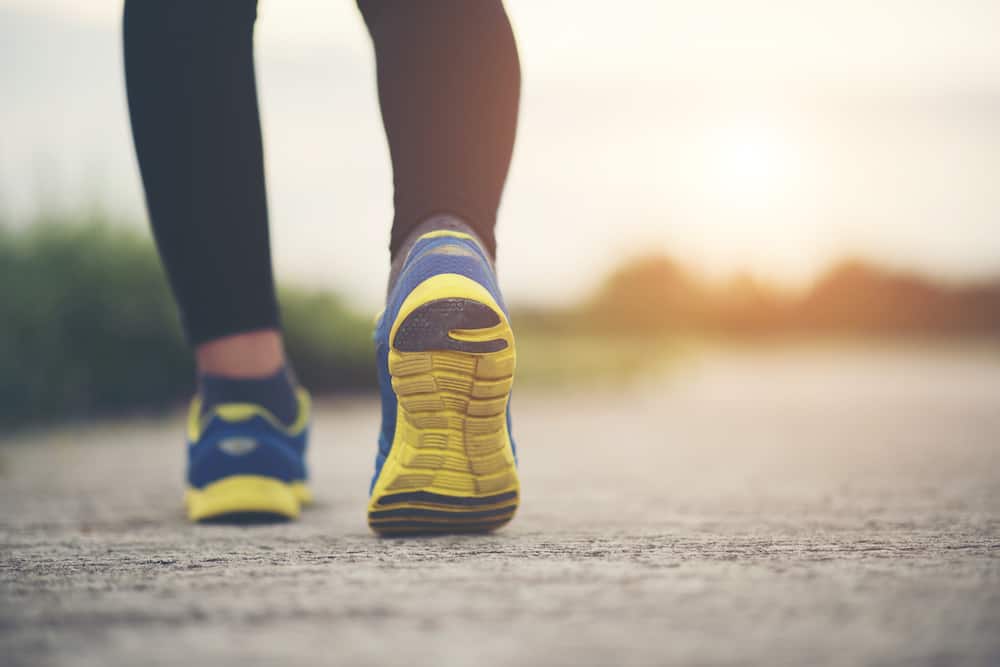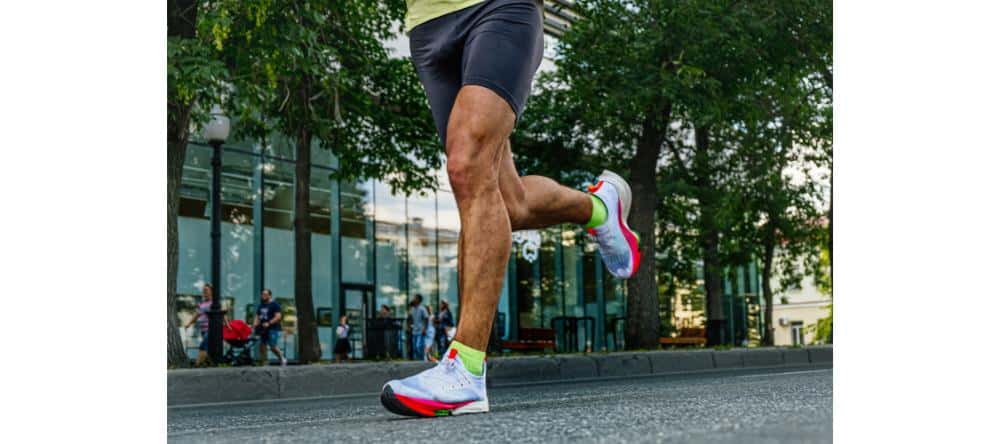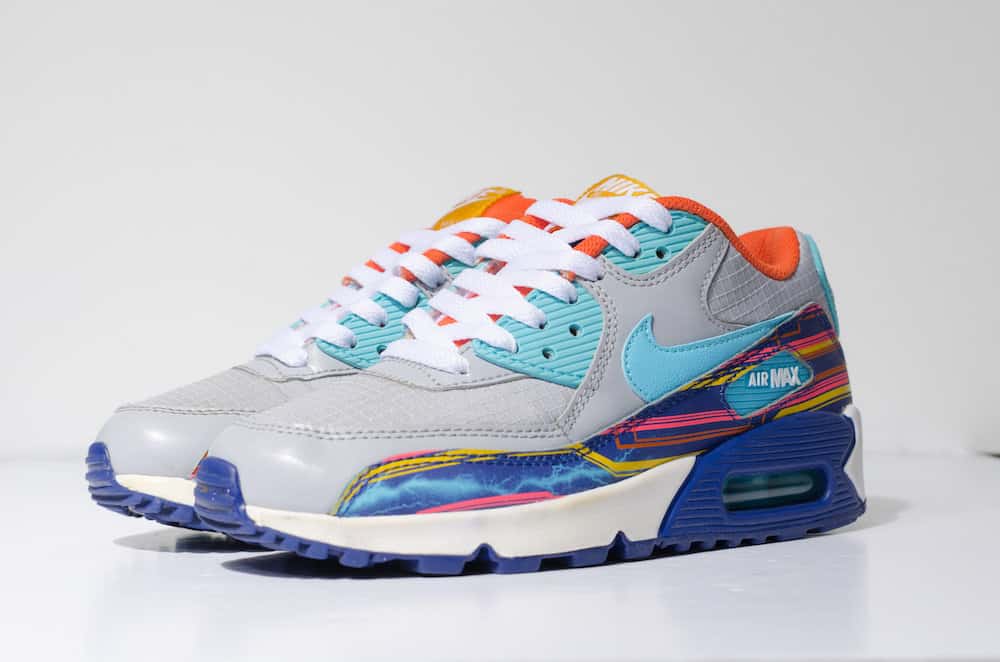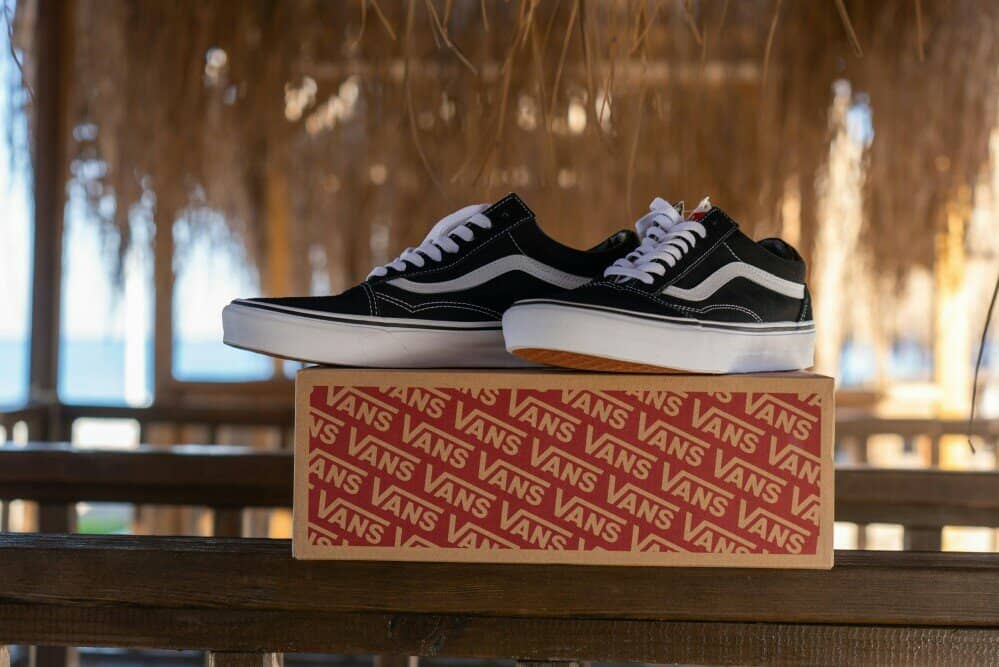Heel pain is a common and frustrating issue for many runners. As you run, your heels bear the brunt of impact. Over time, this repetitive force can lead to pain and soreness. And sometimes, more serious conditions like plantar fasciitis or Achilles tendonitis.
For dedicated runners, heel pain can disrupt training routines and diminish overall performance. Thus, it’s essential to address this issue from the ground up. Starting with the right running shoes.
In this guide, we’ll explore the key design features and types of running shoes that can help prevent heel pain.
We’ll explore specific components such as cushioning, heel drop, and stability mechanisms.
With the right knowledge, you’ll be equipped to choose a pair of running shoes tailored to your foot’s needs. Consequently, you can enjoy pain-free runs for many miles to come.
But first,
Understanding Heel Pain in Runners
Understanding Heel Pain in Runners
Common Heel pain is an issue faced by runners of all levels. Understanding its causes is key to both preventing it and finding the right shoe features to address it. What causes heel pain?
Causes of Heel Pain
Common Conditions
Several conditions are responsible for heel pain in runners. Plantar fasciitis is one of the most common. This condition occurs when the plantar fascia—a thick band of tissue connecting the heel to the front of the foot—becomes inflamed. That often happens due to repetitive stress.
Another frequent cause is Achilles tendonitis. This involves inflammation of the Achilles tendon at the back of the heel and typically arises from overuse or tight calf muscles.
Heel spurs, which are bony growths that form on the heel bone, can also contribute to pain. This is especially common in people with chronic plantar fasciitis.
Repetitive Impact and Poor Biomechanics
Running involves constant heel strikes against hard surfaces. This produces significant impact forces.
Without proper cushioning and support, this repetitive impact can strain the structures in the heel and foot.
Poor biomechanics, such as overpronation (excessive inward rolling of the foot) or supination (outward rolling), can further aggravate the issue. These gait abnormalities place additional stress on the heel and the surrounding tissues. Thus, increasing the risk of heel pain.
Impact of Heel Pain on Running Performance
Effect on Stride, Speed, and Endurance
Heel pain can interfere with your natural stride, making each step uncomfortable. To compensate, runners might subconsciously alter their gait. This can lead to an inefficient running form.
This can reduce speed, impact running economy, and ultimately hinder performance. Persistent pain can also force runners to shorten their distances or reduce their training frequency. Thus, affecting overall endurance.
Risks of Ignoring Heel Pain
Ignoring heel pain can lead to chronic issues, as the underlying causes worsen over time. Left untreated, conditions like plantar fasciitis or Achilles tendonitis can become long-term problems.
These eventually might require more intensive interventions such as physical therapy or even surgery. Additionally, untreated heel pain can lead to secondary injuries.
They disrupt biomechanics and place stress on other parts of the body, including the knees, hips, and lower back.
Now let’s address the pain.
Key Shoe Features That Help Prevent Heel Pain
When it comes to preventing heel pain, the right pair of running shoes can make a huge difference. Let’s look at how each of these features can help.
Cushioning and Shock Absorption
Each time your foot strikes the ground, the impact force travels up through the heel. Proper heel cushioning helps absorb this force.
Thus, reducing the stress on your heel and the surrounding structures. This cushioning is especially crucial for runners, who face repeated impact with every stride.
Cushioning materials spread out the force. They minimize the pressure that directly hits the heel and allow for a more comfortable run.
Running shoe brands have invested in a variety of materials and technologies to enhance shock absorption. Gel inserts are a popular choice, especially in the heel area. They have superior shock-dispersing properties.
High-density foams like EVA (ethylene vinyl acetate) and polyurethane also provide reliable support and rebound.
Some brands use air or gas pockets within the heel for additional cushion without added weight. Selecting a shoe with these advanced cushioning technologies can help make each step softer and reduce the impact on the heel.
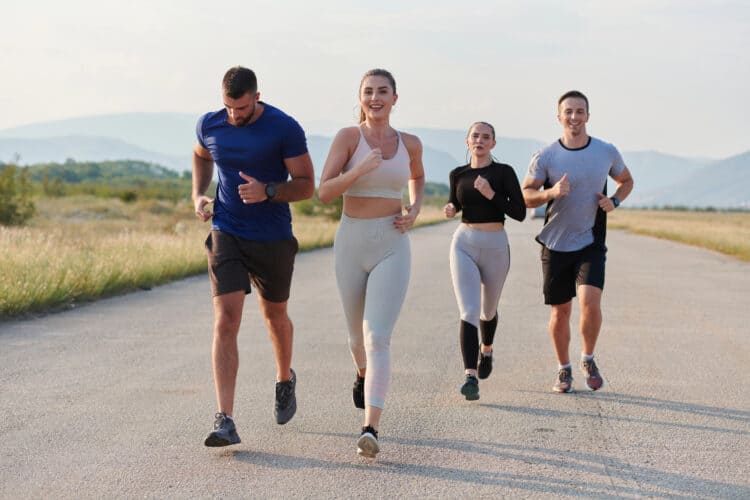
Heel-to-Toe Drop
Heel-to-toe drop refers to the difference in height between the heel and the forefoot. A higher drop means a greater difference. This can lead to more pressure on the heel.
A lower heel-to-toe drop encourages a more natural footstrike. Thus, helping to distribute the force of each step more evenly across the foot.
Runners with heel pain often benefit from a lower heel-to-toe drop, typically around 4-8mm. It encourages a midfoot or forefoot strike.
This can reduce heel impact and promote better alignment throughout the lower body. High-drop shoes are still popular, particularly for those with a heel-first strike.
However, low-drop shoes can help lessen the force on the heel and decrease the likelihood of pain.
Arch Support and Stability
The arch of the foot acts as a natural shock absorber. It helps to support weight and distribute pressure evenly.
Poor arch support can lead to an imbalance in how forces are managed. It often places additional stress on the heel.
This is particularly problematic for people with flat feet or high arches. Both conditions can exacerbate heel pain when not properly supported.
Many shoes incorporate specific materials and designs to support the arch.
Dual-density foams, molded footbeds, and reinforced medial posts are some of the ways brands stabilize the arch and improve foot alignment. Such motion control features help prevent overpronation (excessive inward rolling of the foot) or supination (outward rolling).
This in turn alleviates unnecessary strain on the heel. Arch support can also help stabilize your stride. It reduces heel strain and improves overall comfort on longer runs.
Outsole and Traction
The outsole is the bottom layer of the shoe that makes direct contact with the ground. A durable, well-gripping outsole minimizes slipping.
This helps reduce the impact on the heel and promotes better stability. Shoes with high-traction outsoles can also provide the security needed for diverse running conditions.
Consequently, reducing the risk of sudden movements that strain the heel.
Rubber is the most common material for outsoles. It offers both durability and grip. Carbon rubber, often used in high-wear areas, adds extra toughness.
On the other hand, blown rubber is lighter and more flexible.
Additionally, multi-directional lugs on the outsole enhance traction on various surfaces. They improve balance and stability.
For trail runners, deeper and more aggressive lugs are beneficial. They prevent slips on rugged terrain, further reducing heel stress.

Additional Strategies for Managing and Preventing Heel Pain
Beyond choosing the right shoes, there are several effective strategies to manage and prevent heel pain for runners.
Strengthening and Stretching Exercises
Exercises That Support Heel Health
Strengthening and stretching exercises can help alleviate existing heel pain and prevent future discomfort. Calf stretches are particularly beneficial.
They help lengthen the Achilles tendon and reduce the strain on the heel during impact.
One effective stretch is the wall calf stretch:
- Place your hands on a wall.
- Step one foot back while keeping both heels on the ground.
- Lean into the stretch, feeling it in the back calf.
Achilles Tendon Exercises
The Achilles tendon connects the calf muscles to the heel bone. Strengthening it can enhance overall stability and reduce heel strain.
Exercises like heel raises (where you lift your heels off the ground while standing) are excellent for strengthening this area.
Start with a flat surface and gradually add difficulty by standing on a stair edge. Allowing your heels to dip below the step for a deeper stretch.
Consistently practicing these exercises can improve flexibility and resilience in the tendons and muscles supporting the heel.
Gradual Increase in Running Intensity
Increasing your mileage and running intensity too quickly can place significant strain on the heel. This can cause pain and injury.
Following a gradual progression plan, such as the “10% rule” (increasing weekly mileage by no more than 10%), allows your muscles, tendons, and ligaments time to adapt.
This approach also reduces the likelihood of overstressing the heel, Achilles tendon, and calf muscles.
You also need to avoid overuse injuries, like plantar fasciitis. These are common when the heel and surrounding structures are pushed too hard, too fast.
By pacing your progress, you give your body the chance to strengthen itself incrementally. Thus, reducing the risk of heel pain and improving your endurance safely over time.

Inserts and Orthotics
Inserts and orthotics can be a great supplement for runners who need additional heel support. Over-the-counter options are generally more affordable and provide moderate support.
However, custom orthotics are designed specifically for your foot’s structure and can offer more targeted relief. Custom orthotics are particularly helpful for runners with conditions like flat feet or high arches. These can better align the foot and alleviate heel strain.
Orthotics can also improve shock absorption by redistributing pressure across the foot. They provide additional cushion in high-impact areas like the heel.
This added layer of support decreases the amount of direct stress on the heel. This can significantly reduce pain.
Additionally, orthotics designed to control pronation can help prevent excessive rolling inward, a common cause of heel discomfort.
Proper Warm-Up and Cool-Down Routines
Preparing the body before a run is essential for reducing heel pain and overall injury risk.
A proper warm-up, including light jogging and dynamic stretching (e.g., leg swings and ankle circles), activates blood flow and loosens the muscles and tendons around the heel.
This prepares the foot for the repeated impact of running and minimizes the risk of stiffness and strain.
Cooling down after a run is just as important as warming up. Static stretches, such as holding a calf or hamstring stretch for 20-30 seconds, help reduce muscle tightness and promote recovery.
Gentle massaging of the feet and Achilles area also aids in relaxation and reduces the likelihood of heel soreness the next day.
Conclusion
Preventing heel pain requires more than just the right running shoes.
It involves a holistic approach that includes proper footwear, targeted exercises, gradual training progressions, supportive inserts, and a consistent warm-up and cool-down routine.
Throughout this guide, we’ve examined how specific shoe features like cushioning, heel-to-toe drop, and stability elements can reduce heel strain and enhance comfort.
By choosing shoes that suit your individual needs and integrating proactive strategies into your routine, you’re setting yourself up for healthier runs and improved long-term performance.

